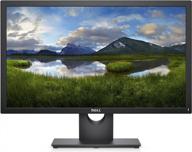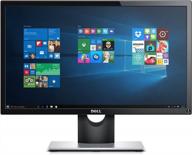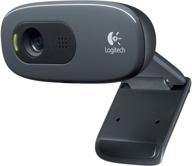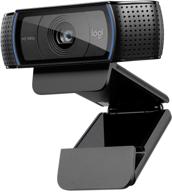
Review on ViewSonic XG320U Elite 4K Monitor with FreeSync, Quantum Dot Technology, Ergonomics, 150Hz, Cable Management, Ambient Lighting, DisplayPort and HDMI by Joe Crawford

Fantastic HDMI 2.1 monitor with amazing color accuracy
ADVANTAGES: HDMI 2.1. The most obvious reason to buy this monitor is the HDMI 2.1 port. I connected it to my PS5 via this HDMI 2.1 port and tested the high refresh rate when playing Crucible PvP matches in Destiny 2 (which supports 120fps) and it was noticeably smoother. Navigating to Settings -> Display & Video -> Video Out -> Video Out Info confirms the 120Hz available for this. The only thing to note is that YUV420 shows up as a chroma subsampled format. The PS5 can support up to YUV422 at 120Hz, but even manually setting the 4K video bitrate to -1 (which apparently could force YUV422) didn't change anything, so it's either a hardware limitation or a built-in limitation of the monitor. even for HDMI 2.1. For the PS5, or any console in general, it doesn't really matter as the chroma subsampling compression is most noticeable in text and obviously you'll be mainly gaming and watching video on it. Might be worth a look if you're looking to use an HDMI 2.1 connection for your PC, but I haven't tested it as I'm using DisplayPort instead. Outstanding color fidelity. The out of the box color calibration is great, but I had access to a colorimeter so I decided to calibrate it. For this I used X-Rite i1Display Pro: * 99.6% sRGB, 99.4% Adobe RGB and 93.1% DCI P3 color space * 184.7% sRGB, 127.3% Adobe RGB and 130.8% DCI P3 color space. enough even for colour-accurate work such as professional photo and video editing. An enormous amount of gamma ensures the display of bright colors. Absolutely amazing color quality for an IPS LED monitor. Good brightness levels. The review measured 81 nits at 0% brightness, 122 nits at 25% brightness, 165 nits at 50% brightness, 284 nits at 75% brightness, and 402 nits at 100% brightness. More than enough for a sun-drenched room and dimmed enough not to glare if you dim the lights at night. As a DisplayHDR 600 certified monitor, it boosts brightness to 634 nits when HDR is enabled. That's still not good enough for true HDR, as it requires a minimum brightness of 1000 nits, but monitors that can reach that brightness at the time of testing are slightly more expensive. Not to mention you'll need an OLED or mini-LED panel in your monitor to deliver the reasonably high contrast ratio for true HDR. The panel in the XG320U is still just an IPS LED panel with 16 local dimming zones, so the contrast ratio only increases to 1108:1 with HDR enabled. Suffice to say, if you want to be blown away by true HDR gaming or viewing experience, you'll need to spend a little more money. But it's still a decent improvement over most other monitors on the market. And like other LED monitors, there is backlight bleeding, but I didn't find it any worse than other monitors. - High refresh rate. A refresh rate of 150Hz is advertised, but I'm just keeping it at the original 144Hz refresh rate. You literally won't notice the difference between 144Hz and 150Hz. A high refresh rate means less input lag and a smoother gaming experience. More frames at once can allow you to react faster because your brain has more information to process. - Well-designed monitor. On the left side behind the monitor is a hook that flips open so you can plug in your headphones. There is also a mouse bracket under the monitor that can hold the mouse cable in place. Can be adjusted in height, rotated left or right and tilted to portrait for good ergonomics. Under-monitor RGB backlighting and hexagonal RGB backlighting can be adjusted to rainbow, breathing, and static color patterns in the On-Screen Display (OSD) menu. I like the overall aesthetics of the monitor - cleanliness is what I would describe. No aggressive gaming aesthetics or nasty RGB patterns. Of course, this is just my opinion and looks are subjective, but it could pass as a minimalist monitor without the ELITE logo. CONS: - Only 1 HDMI 2.1 port. The other HDMI port is HDMI 2.0 only. This isn't a problem for me as I only needed an HDMI 2.1 port for my PS5, but this could become an issue in the future as HDMI 2.1 devices become more common. I'm a little puzzled as to why ViewSonic went with this, given that almost every other HDMI 2.1 monitor on the market has at least two HDMI 2.1 ports. Terrible on-screen display (OSD). Probably the worst OSD I've ever seen. The text is noticeably jagged and pixelated. The entire OSD is grayscale with white and black text on a gray background. Yes, and the background must also be included as it is set to transparent by default. White text on an almost transparent background is almost unreadable, so you'll have to close your eyes to adjust it. This is the kind of OSD you might see in a cheap business monitor, where you don't expect the user to adjust anything other than maybe the brightness. This is unacceptable for a monitor in this price and performance class. I have no idea what ViewSonic was thinking. *NOTE: ViewSonic offers a downloadable program called Elite Display Controller that allows you to change OSD settings with a much better user experience. However, it has an issue that causes it to quit/crash after launch unless you set the XG320U monitor as the primary audio device in the audio settings in Windows. This isn't exactly a solution that you can easily find yourself, and I was stumped for a while until I found a Reddit post that described a solution to this. ViewSonic really needs to work on improving its software. - Pretty poor response time, especially for the price and for a gaming monitor. The response time of the monitor depends on which overdrive mode you have activated. Out of the box I had it set to "Faster" (average), which according to review was an average response time of 7.21ms. The "Fastest" setting reduces it to around 5.37 ms, which shouldn't be too much of a difference. However, setting it to the default setting increases the average response time to 9.24ms, and it can reach as high as 13.883ms in some places, so I wouldn't recommend it. As long as you're on the Faster OD setting or higher you should be fine, but it's a little disappointing for what's advertised as a gaming monitor. Note that using higher overdrive settings can cause reverse ghosting, although I haven't tested it myself. ALTERNATIVES: - ASUS ROG PG32UQ. It uses the same panel as this ViewSonic monitor, so performance is identical. The PG32UQ has two HDMI 2.1 ports compared to one HDMI 2.1 and one HDMI 2.0 port on this XG320U monitor. It also has the aggressive gaming aesthetic found in all other ROG monitors. And at the time of writing, it's sold out almost everywhere. If you need an additional HDMI 2.1 port, don't mind the "gaming" look of the monitor, and are willing to wait until it's in stock, the PG32UQ is another option if you want similar performance to the ViewSonic XG320U wish. Monitor.-MSI Optix MPG321UR-QD. Again, it uses the same panel as this ViewSonic XG320U monitor, as well as the aforementioned ASUS PG32UQ. As with the ASUS PG32UQ, you get two HDMI 2.1 ports and a more distinctive gaming aesthetic. Also sold out everywhere at the time of writing. Unlike the other two, this monitor also has an extra USB-C port for an extra video connection (although it only delivers 15W of power for charging). If you need the most ports, this is the best alternative - GIGABYTE M32U. This 4K 144Hz monitor costs $799 ($200 off) and has two HDMI 2.1 ports, but it's only rated for DisplayHDR 400 (worst HDR performance) and has lower color accuracy. For those reasons, I didn't think it was a viable alternative to the XG320U, but if HDR performance and color quality aren't high on your list, this is a cheaper alternative. There are other HDMI 2.1 monitors on the market. at the time of writing, but they are all either smaller (27"-28") or much larger (43+"), so I won't do a direct comparison for them. If you want a smaller monitor, the LG 27GP950-B is a good option as it has a DisplayHDR 600 rating like this XG320U monitor and above average color quality (although still not on par with the XG320U) starts at 48". These OLED TVs have true HDR performance and even better color quality than the XG320U, but they're too big for me to use on a desk. I personally find that a 32 inch monitor is the largest monitor size. CONCLUSION - Overall this is a great HDMI 2.1 monitor. Fantastic color quality, good aesthetics and ergonomics convinced me to buy it, the disadvantages listed are small problems for me personally.
- monitors
- weak
New products
Comments (0)
Top products in 🖥 Monitors

Dell E2318Hx LED Lit Monitor: High-Definition Display with Flicker-Free Technology and IPS Panel

109 Review

🖥️ Revolutionize Your Interface with Planar PXL2230MW 22 Inch 16 Touchscreen

97 Review

LG 27MP59G-P 27 inch Monitor with FreeSync, 75Hz Refresh Rate, and 1080p HD Resolution

93 Review

Dell SE2216HV LED 💻 Monitor with 60Hz Refresh Rate

101 Review
Another interesting products

Enhance Your Visual Experience with Logitech C260 Webcam

78 Review

💻 Get Amazing Video Quality with Logitech HD Pro Webcam C920 (Discontinued Edition)

83 Review

Smartphone Samsung Galaxy A50 4/64 GB, 2 SIM, black

82 Review

Renewed Logitech G PRO X Wireless Lightspeed Gaming Headset with Blue VO!CE Mic Filter for Immersive Gaming Experience

122 Review

